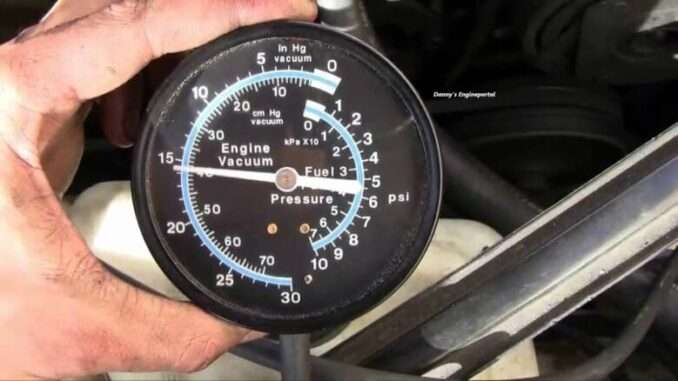
So, have you ever thought about using a vacuum gauge, to check the condition of your engine.
Consequently, this is similar to doing a cylinder leak down test, but in a much easier way.
Vacuum gauges are often forgotten, in this age of OBD-II scanners and other specialized tools. But, a vacuum gauge can VERY quickly, tell you whether or not your engine is good, or needing repairs.
So, in just 3-5 minutes, Using A Vacuum Gauge, you can know if an engine is healthy or not.
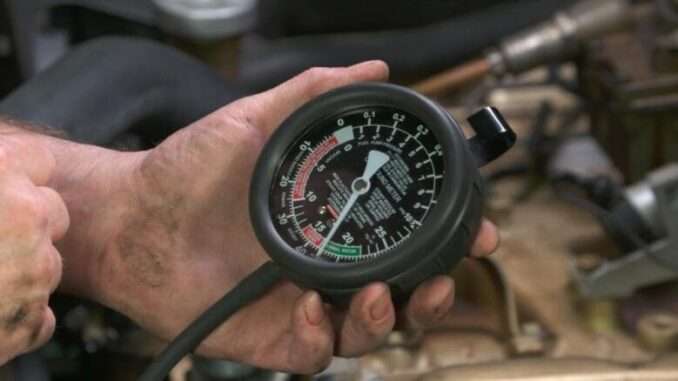
Periodically checking your engines vacuum, will help you learn how your engine is doing. To check an engine with a vacuum gauge, all you need is a vacuum gauge.
How To Test Your Engine, Using A Vacuum Gauge
Doing The Test
So, to test the engine, start it and let it reach, full operating temperature. Then, simply connect your vacuum gauge, to an empty vacuum port, on the intake manifold (PAST the throttle body). Consequently, you may need to T a vacuum line, which may or may not have come in your kit. Once you’ve connected the gauge, you should see, a STEADY reading at idle with the throttle closed. Consequently, that reading should be, between 17 and 22 inches of Mg (mercury).
What Are The Vacuum Gauge Readings Telling You
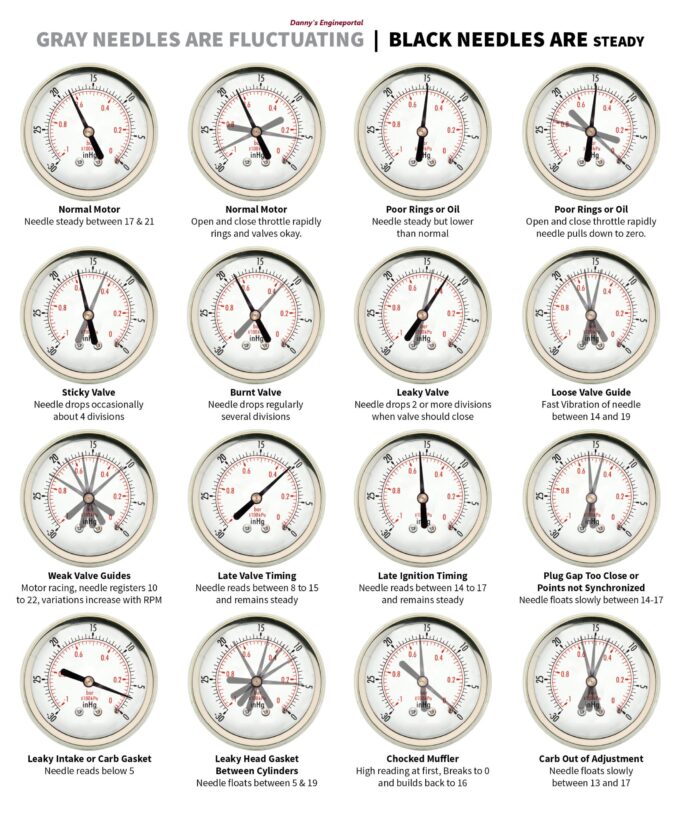
A high, steady vacuum reading, is the sign of a healthy engine.
If you’re at altitude, these readings may be lower (1 inch of mercury for each 1000 ft. above sea level ). A low vacuum reading means, you have poor piston rings or oil rings. You may also note lower vacuum readings, when running high overlap camshafts or changed camshaft timing.
If the engine passes that test, then snap the throttle open and closed again. Doing this quickly, should reveal a vacuum drop, to perhaps 0-3 or so. And then, it should snap back, to 25 before settling back to 17-22 again. Consequently, this means, the valves and rings are OK.
Snapping the throttle and getting a vacuum gauge drop to 0. And then, a climb to only say 20-22, will possibly indicate worn rings. Consequently, it should snap temporarily higher (3-4 inches or so) and then settle back.
A sticky valve
Can be spotted by seeing, a vacuum reading, that occasionally drops from normal, by about 4 inches of mercury.
A burnt valve
Will behave the same as a sticky valve, but will drop much more. Usually, about 6 inches of mercury (and then return back to normal, in a cycle).
Worn valve guides
Can be detected by, a vacuum gauge reading that vibrates back and forth, between 14 and 19 or so very quickly.
Weak valve springs
If you suspect weak valve springs, rev the engine to say 4000 rpm. Then, see if the needle, swings back and forth rapidly. Then raise the revs, to 5000 or even 6000 rpm. So, if your valve springs are weak, you’ll see the swinging, get wider as revs increase.
A vacuum leak
Would be indicated by, a low reading of say, 5 inches of mercury or so. Though, a very low reading can be caused by, extremely advanced ignition timing or incorrect camshaft timing.
Weird Readings
Issues can be found by seeing, a floating needle, between 5 and 19 inches of mercury. Possibly, caused by a intake manifold gasket leak or a faulty injector. You can check the oil for coolant, if you see this behavior.
Behavior such as a vacuum gauge indication that shows, a slow movement between various readings, could mean:
- Leak in the intake manifold
- Bad idle air/fuel ratio
- Clogged (PCV) system
Additional Help About The Readings
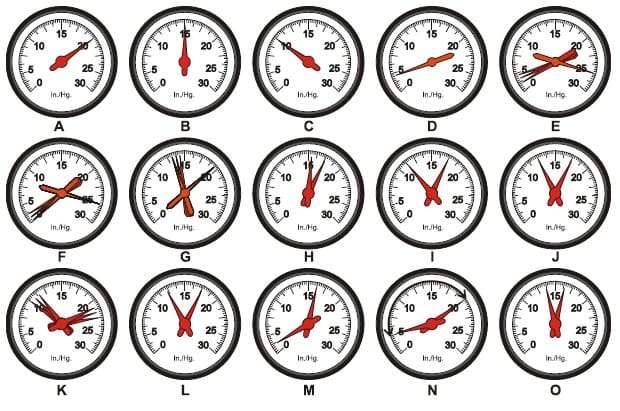
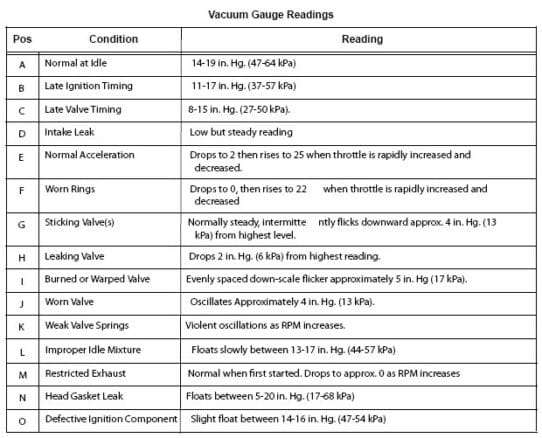
Conclusion
So, checking your engine with a vacuum gauge, is still the fastest test. Furthermore, vacuum gauge readings, do not necessarily tell you with 100% certainty, what the problem is. But, they will tip you off that, something certainly is wrong.
BY DANNY BENDER




